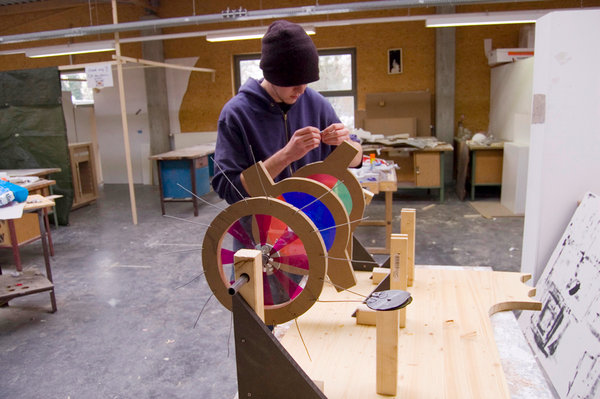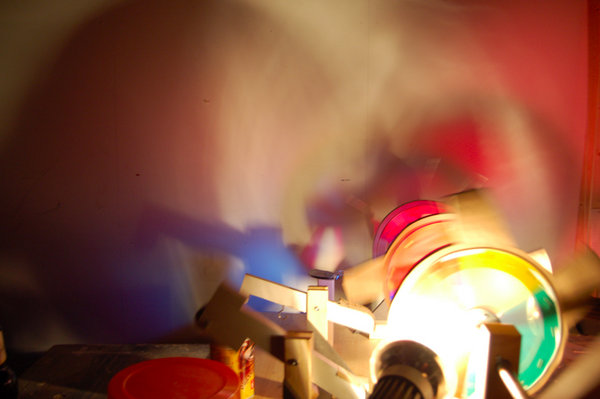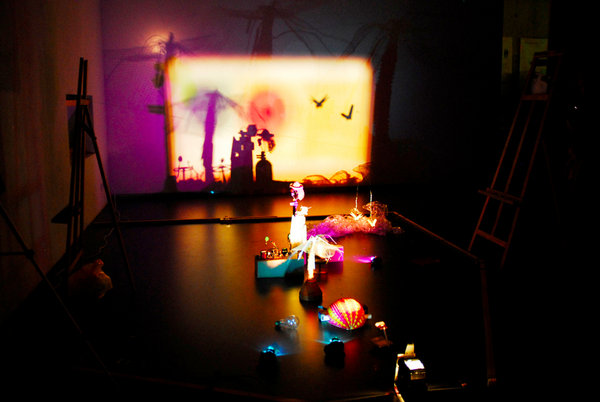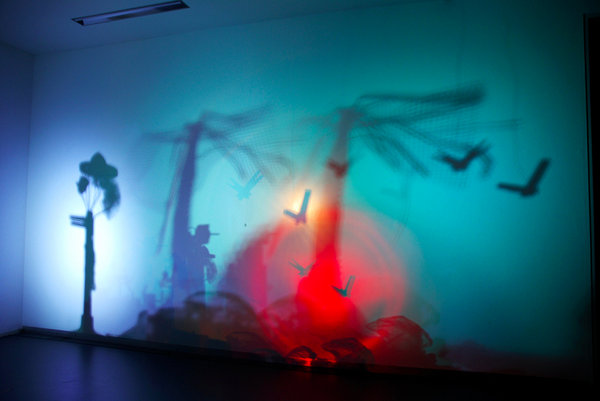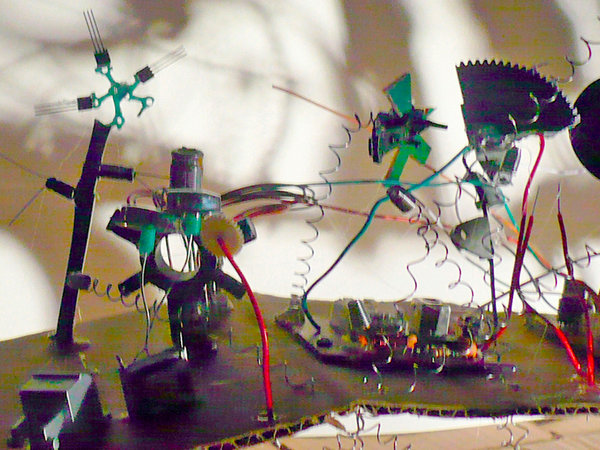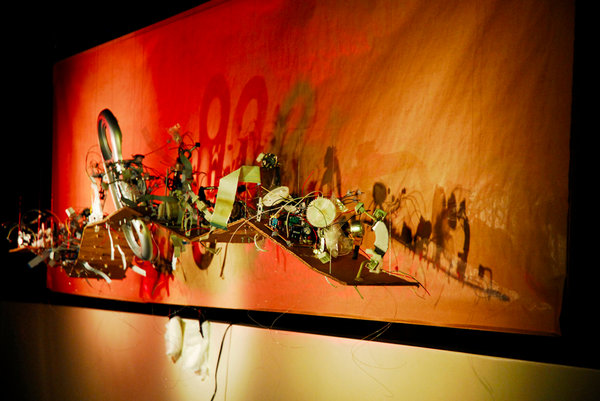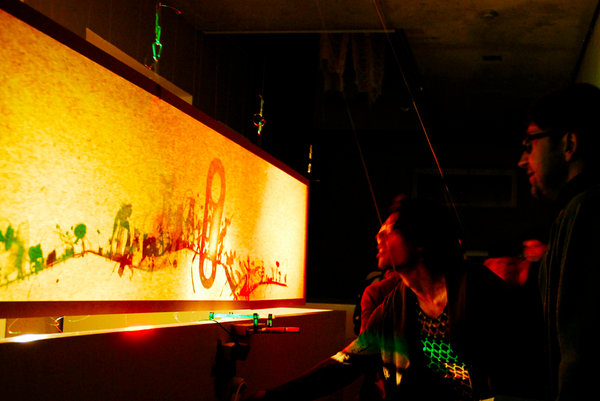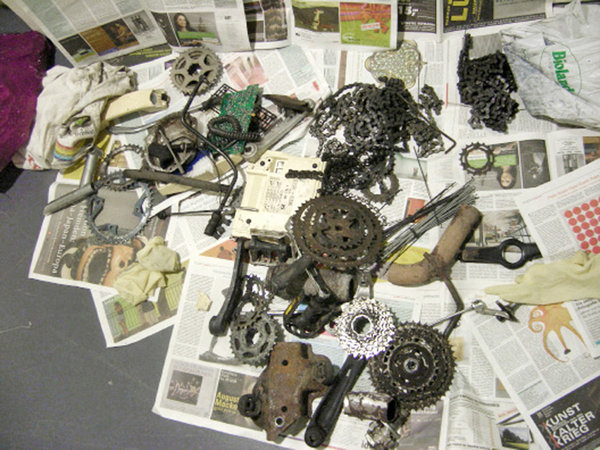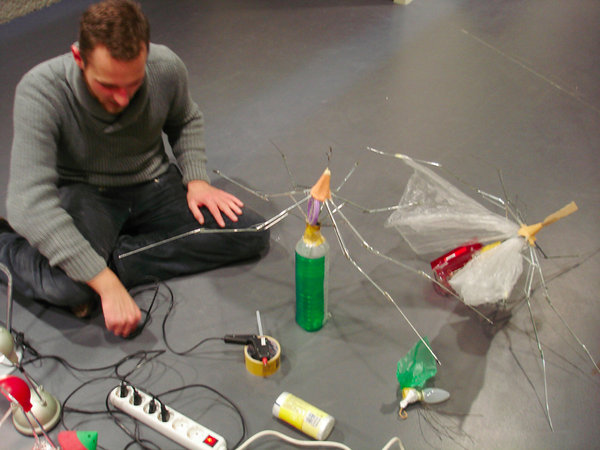Learning objectives
- The exercise is designed to methodically promote visual acuity, spatial imagination and the ability to create spatial atmospheres.
- Interactions of light, color, form and space are examined on the sculptural object, in the projection and in the context of an overall installation and methodically applied to work out the idea. In addition to learning the basic principles of scenography and lighting technology, students acquire an understanding of complex spatial design tasks through practical experimentation.
Contents
- In the first step, very different found objects are tested with regard to their suitability for a later light installation. The material for the light and shadow experiments is obtained from found objects such as readymades, scrap and garbage. The sculptural and formative qualities of the objects in the context of light and shadow projection are essential.
- In the second step, experience is gained with different light sources, the number and characteristics of which have a decisive influence on the result. Essential photometric parameters such as light direction, color temperature, hardness and beam angle are introduced.
- In the third step, colored filters are used and examined for their formal, content-related and dramaturgical effect in the context of the overall light installation. As in every step, the sculpture’s three-dimensional and shadow-forming effect is further developed and optimized.
- Additive and subtractive light mixtures and colored shadows are used to create complex spatial installations of sculptural objects and multidimensional image projections.
[vimeo]https://vimeo.com/41346098[/vimeo]
Light installation tube radio, Kaur Hensel and Jantje Altmstedt


